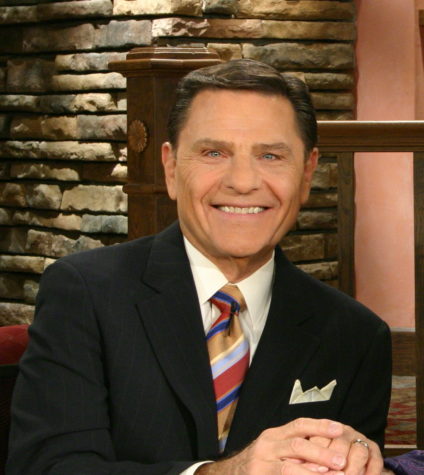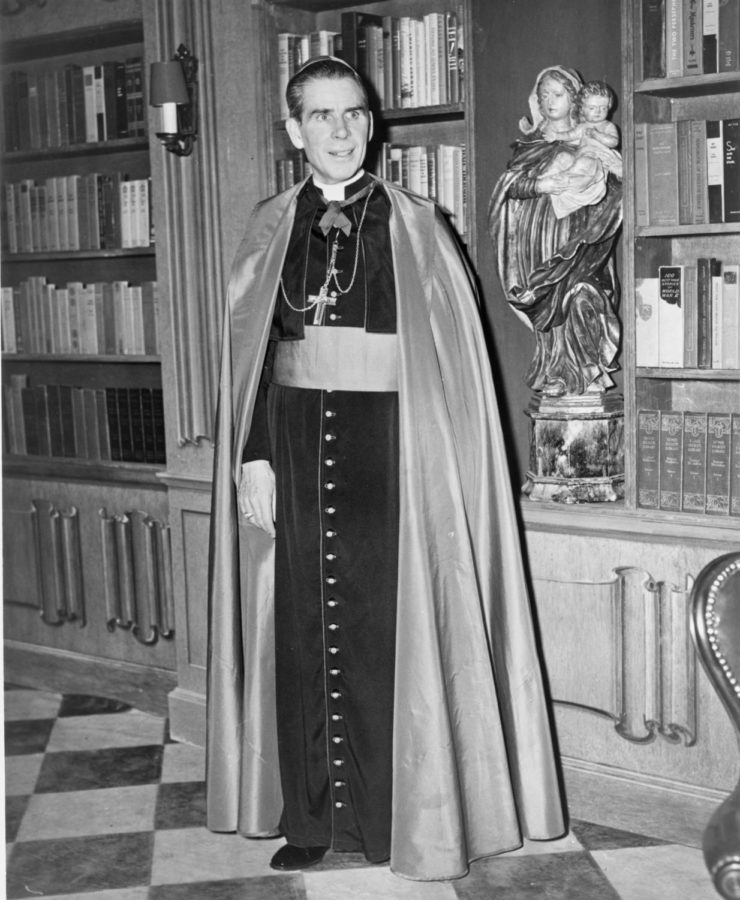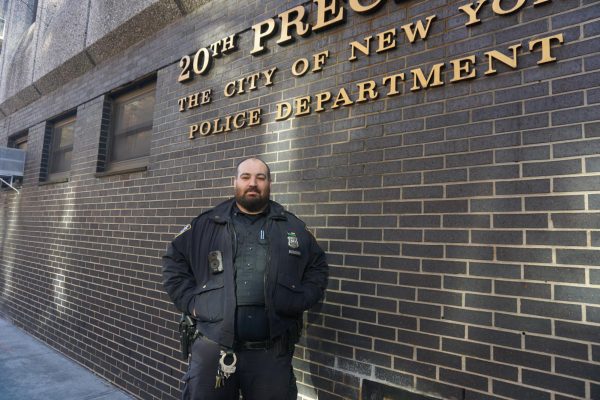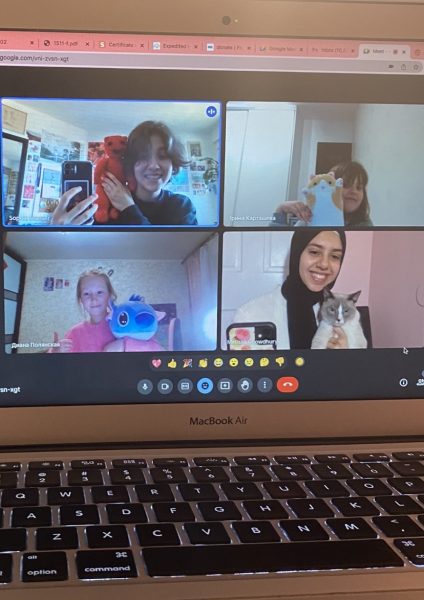The Story of American Televangelism
The lives, deaths, and resurrections of America’s wealthiest preachers.
Fred Palumbo via Wikimedia Commons
Archbishop Fulton Sheen’s multiple TV shows made him a household name in the 1950s, and the Catholic Church is currently discussing making him a canonized saint.
In 1964, media theorist and philosopher Marshall McLuhan published Understanding Media: The Extensions of Man, a book which argues that the most important thing about a piece of information is not the information itself, but rather how it’s presented to an audience; in other words, “the medium is the message.”
McLuhan’s book was released during a time when television was becoming an increasingly important part of daily life. By 1955, over half of American households had a TV, and shows like I Love Lucy and Dick Tracy had entered popular culture. The development of the television had even begun to go beyond the entertainment industry and encapsulate politics, with Richard Nixon and JFK appearing on air in the first-ever televised presidential debate.
But while watching TV was helping shape how people spent their free time, and even how they voted, it was also changing the way they engaged with another cornerstone of American life: religion. In addition to traditional religious activities like attending church on Sundays, many American families also began tuning into sermons given on TV by America’s first televangelists.
Archbishop Fulton J. Sheen is widely considered to be the world’s first televangelist, and his radio show The Catholic Hour ran for 20 years on NBC. In 1952, Sheen transitioned to television, hosting the extremely popular Life is Worth Living, and eventually, The Fulton Sheen Program, for which he won two Emmy awards for Outstanding Television Personality.
Each episode of Life is Worth Living consisted of Sheen speaking directly to a live audience, delivering a sermon about a different one-word subject each night (the first episode’s subject is ‘Patriotism’). His sermons touched on everything from family life to politics, and the charismatic Archbishop always ended his speech with an impassioned call to action and a cheerful “God love you!”
Other televangelists at the time replicated Sheen’s model to broadcast their own sermons to millions of people. One notable example was Evangelist minister Billy Graham, who went on over 400 televised “crusades” preaching to live audiences of thousands upon thousands of people. Graham was so successful that he was given a star on the Hollywood Walk of Fame, and had become friends with every U.S. president since Harry Truman.
Graham and Sheen were the two of the most influential preachers of the 1950s and ’60s, and the DNA of their sermons is still present in the work of modern televangelists. Graham was especially skilled at blurring the line between religious figure and traditional celebrity, becoming the first public religious figure to amass a large personal fortune off of his preaching.
In the wake of Graham and Sheen’s success, a far more entrepreneurial generation of televangelists evolved the practice into an industry. Preachers like Pat Robertson took broadcasting sermons on mainstream television channels one step further, founding his own channel, the Christian Broadcasting Network (CBN) in 1960.
Initially, the channel was small, and Robertson’s flagship show The 700 Club, was named after the number of viewers he needed to donate 10 dollars a month to keep him on the air. By the 1970s, however, Robertson was able to expand the network to include right-leaning news programming, eventually leading to an almost 2 billion dollar acquisition by Disney and a rebranding of CBN as Freeform. The 700 Club and other CBN programming can still be viewed online for free.
Robertson made a fortune off of CBN, and is widely regarded as a pioneer of modern televangelism. Donations from viewers almost completely funded CBN for three decades, and donations are still accepted on their website.
Jim and Tammy Faye Bakker were other televangelists who co-founded their own TV station after a brief stint at CBN, and the proceeds from their talk show, The Praise the Lord Club, were used to fund a Christian theme park called Heritage USA.
The shows run on televangelism networks had more varied formats than the uncut sermons of the 1950s, often incorporating snappy editing and special guests to make the program feel more like a traditional variety show with a religious twist. Televangelists funded the higher production value of some of these shows by preaching the “prosperity gospel” to their audiences. The prosperity gospel states that wealth is a sign of God’s favor, and

encouraging people to donate money to already wealthy televangelists will increase your chances of getting rich yourself.
Not only did televangelists of the ’70s and ’80s make more money than those of the past, they were also embroiled in far more personal scandals. Pat Robertson and other high-profile televangelists were criticized for claiming a practice called “faith healing” to be successful in curing people of disease through prayer. During the HIV/AIDS epidemic of the 1980s, Robertson claimed falsely that people had been cured of the disease after listening to his sermons. More recently, televangelist Kenneth Copeland claimed to be able to cure COVID-19 by “blowing the wind of God” at the virus.
Jim Bakker resigned from the Praise the Lord club after hush-money payments to a secretary came to light. Bakker was later found guilty of fraud and imprisoned for five years before being paroled in 1994.
Despite these scandals, most of the televangelists who were around in the 1970s are still in business today. After leaving prison, Jim Bakker brought back the Praise the Lord Club and continues to run it to this day. CBN is still operational, and Pat Robertson only just resigned in 2021. Kenneth Copeland and his wife Gloria continue to preach the prosperity gospel, and the televangelism industry continues to thrive financially thanks to the internet.
Mass media outlets like the internet and TV have made religion more profitable and exploitative than ever, and the business models of televangelists overlap considerably with those of motivational speakers like Tony Robbins and Gary Vaynerchuck, and Multi-Level Marketing businesses (or pyramid schemes) like Herbalife and Mary Kay. Televangelists are salespeople and performers, presenting a product to their audience and convincing them to pay for it.
If televangelists have done anything, it is that they have proved that Scientology founder L. Ron Hubbard was right when he said, “If you want to get rich, you start a religion.”
If televangelists have done anything, it is that they have proved that Scientology founder L. Ron Hubbard was right when he said, “If you want to get rich, you start a religion.”
Otho Valentino Sella is an Editor-in-Chief of ‘The Science Survey.' Otho has always been fascinated by stories and storytelling, and he sees journalistic...











